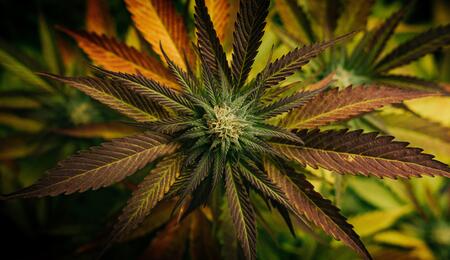Interactions between Common Medications and Cannabis

As Cannabis rejoins the world of modern medicine, it is time to examine its interaction with other pharmaceuticals.
Cannabis has been an orphan drug for too long. Medical practitioners have been loath to prescribe it due to its illegal nature. Patients do not admit to its use for the same reason. Therefore, it is difficult to obtain peer-reviewed, scientific statistics regarding drug interactions between medical marijuana and commonly-used medications.
Many patients are able to tolerate the reactions between Cannabis and the pharmaceutical medications they take. It is important to make note of certain cases where Cannabis can cause unwanted side-effects. For example, Cannabis is known to have an additive effect when taken in combination with many pain medications. This additive effect is also known as 'potentiation', where one medication amplifies the effect of another. This is often stronger than the predictable compound effect of combining drugs.
Many patients report that using Cannabis with their NSAIDs (non-steroidal anti-inflammatory drugs) allows them to have greater relief of their painful symptoms. NSAIDs are often prescribed for inflamed joints that occur as the result of arthritis. Cannabis was often prescribed alongside opioid pain medications before both came under regulatory control in the early twentieth century. A patient needs to be cautious, because this additive effect can amplify the creation of drowsiness or the depression of the central nervous system (CNS). The central nervous system controls heart rate and respiration; therefore, this effect can be fatal.
Cannabis alone has never caused death but combining drugs can have unforeseen results.
When mixed with other sedative drugs, Cannabis offers a similar effect. This includes many sleeping pills in the class known as cyclopyrrolones, or 'Z-drugs'. Some American brand names include Sonata, Lunesta and Ambien; in Europe, this drug is known as Zimovane. These drugs act by extending the activity of the GABA neurotransmitter manufactured in the nervous system that mediates a calming and tranquilizing effect in the body. Z-drugs are similar to benzodiazepines, such as Valium and Ativan. They both increase the activity of GABA neurotransmitters but via different mechanisms.
Because Cannabis has a tranquilizing effect, it can potentiate this action when produced by other drugs. In 2014, the FDA issued an official warning about Lunesta. The FDA lowered the starting dose from two milligrams to one milligram and cautioned that, the day after use, many individuals were unable to cope with activities that required full alertness, such as driving or operating heavy machinery. This effect is more likely with females than with males.
There are other medications that have a tranquilizing or depressing effect on the CNS. Antihistamines, H-1 receptor antagonists, are used in the treatment of allergy-related symptoms associated with hay fever. These symptoms include a runny nose, sneezing and watery eyes. Examples of these drugs are loratadine (Claritin), fexofenadine (Allegra) and diphenhydramine (Benadryl). Antihistamines have the potential side-effect of causing drowsiness. When combined with Cannabis, this side-effect becomes potentiated - therefore, more likely to occur. Tachycardia is another possible side-effect of mixing these medications with Cannabis.
Although alcohol is not a pharmaceutical, it does have CNS-depressant effects. These effects are amplified when combined with Cannabis. When alcohol is combined with any medication that depresses the CNS, this effect is amplified and uncertain.
Metformin, known by the brand name Glucophage, also has a potential for interaction with Cannabis. Metformin is used in the treatment of diabetes, as an aid to patients needing help controlling their blood sugar levels. Cannabis has been shown to decrease the effectiveness of metformin, as the effect of lowering blood sugar is opposed by cannabinoids. Diabetic patient who use metformin should be cautious and check their blood sugar levels to know if Cannabis has lessened the efficacy of this medication.
Hypertension (high blood pressure) is a common complaint in developed countries. Many patients use anti-hypertensives to lower their blood pressure. However, Cannabis can cause a temporary increase in blood pressure; this is more likely to occur with sativa strains than with indicas - some sativas even have the nickname of 'speed weed' in many Amsterdam coffeeshops. Most Cannabis available today is a combination of both strains; cross-breeding means that most Cannabis offers a mixture of sativa and indica physiological effects.
The effect of prescription drugs can be compounded – or weakened – when combined with Cannabis
Tachycardia is another side-effect that can occur when Cannabis is combined with stimulants. Patients taking cardiovascular medications for hypertension or arrhythmias, or patients with cardiovascular symptoms, would be cautious to monitor their response to a new sample of Cannabis. This caution applies to mixing other stimulants - such as amphetamines, cocaine and even strong coffee - with Cannabis. Tachycardia, palpitations or hypertension may occur. Smoking can, on its own, produce such issues; choosing vaporization or edibles, or indica-dominant strains, may help to prevent such complications.
Mental illness is unfortunately a common complaint in modern civilization - so is the use of medications to treat it. Many patients use tricyclic antidepressants or other drugs (SNRIs) that inhibit the uptake of serotonin and norepinephrine. These drugs can be prescribed for other symptoms, including anxiety disorders, obsessive-compulsive disorder (OCD), attention deficit hyperactivity disorder (ADHD), chronic neuropathic pain and fibromyalgia syndrome (FMS). These drugs can also be prescribed for the relief of menopausal symptoms. Examples are amitriptyline, amoxapine and desipramine. When combined with Cannabis a potentiation of effects related to drowsiness and sedation can occur.
Some of these drugs, however, have a stimulant effect. Their use can bring about symptoms of hypertension and tachycardia, the same as stimulant drugs, when combined with Cannabis. Scientific evidence has been suppressed, but anecdotal evidence abounds for the use of Cannabis for various symptoms of mental illness. Depression and bi-polar symptoms have been reported to have improved with the use of certain strains of Cannabis.
Theophyllines are a group of drugs often used in the treatment of asthma and COPD (chronic obstructive pulmonary disease). These drugs are related to caffeine. Cannabis has been shown to increase the metabolism of these drugs; therefore, the dose or frequency of these medications may require adjustment when combined with Cannabis.
These are some of the more common interactions between medications and Cannabis. Those patients being treated with a pharmaceutical drug are wise to be mindful of the possible interactions between their use of Cannabis and the drugs they take for their medical condition.



